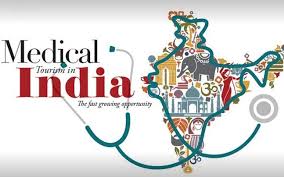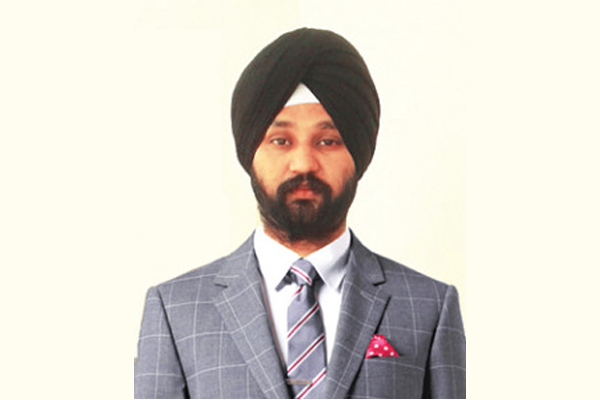

With rising incidents of breast cancer, the focus needs to shift from treatment to prevention strategies which include early detection, writes Zoya Brar, Founder & Managing Director of CORE Diagnostics.

A decade ago the breast cancer was largely considered as the disease of the developed world. But now incidents of breast cancer are rising in India. It is being largely reported that cancer is relatively find in young women.
Today, the breast cancer is one of the leading causes of cancer causing deaths among women.
According to WHO estimates, roughly 144,937 women in India were detected with breast cancer in 2012 and 70,218 died because of it, making it one death for every two new diagnoses.

With the incidence of the disease rising by over 20% since 2008 India is expected to witness a whopping 200,000 new cases of breast cancer per year by 2030.
The rise in disease can partly be attributed to an increase in recorded numbers due to more women being diagnosed.
At the same time, number of lifestyle factors also affect such as — increasing urbanisation, adoption of western lifestyles, rise in obesity, sedentary ways of living, and changing reproductive behaviours like delayed childbirths.
How Much Significant is Early Detection?
Not many may know but in North America, Sweden and Japan, survival rates of breast cancer patients are as high as 80%! In western countries, regular screening programmes have succeeded in early identification and treatment of a large number of women. However, absence of a community based screening program in India puts the onus on individuals. No wonder, survival rates here are among the lowest in the world.
Sabhyata was only 40 years old when she was diagnosed with breast cancer. In the absence of regular screening or clinical examination, her disease was detected only in stage III. She underwent a surgical treatment, followed by radiation therapy but her cancer relapsed within six months. Over 60% of breast cancers in India are diagnosed in stage III or stage IV. By this time, it is too late to cure the patient or significantly prolong her life. Early detection helps in curing the disease at an early stage, long term survival and allows for breast conservation.
Breast cancer can be detected early, only if the combination of self and clinical breast examination coupled with mammography tests taken regularly by women. It is extremely important for women to keep a close track of any changes occurring in their bodies. Any lump in the breast or underarm area, any unusual discharge from the nipple, any change in the shape or size of the breast should be taken note of and immediately reported to the doctor for further examination.
Modifiable Risk Factors
Surprisingly, obesity can be directly linked to increased risk of 13 types of cancers. Breast cancer is one of them. Apart from excessive weight, there are other modifiable and preventable risk factors such as physical inactivity, smoking, unhealthy eating habits, and reproductive behaviours like late pregnancy and reduced duration of breastfeeding. In fact, a study cited by WHO concluded, 21% of all breast cancer deaths worldwide were attributable to alcohol use, overweight and obesity, and physical inactivity.
While you cannot eliminate the risk of breast cancer, reducing it is certainly in your hands. Having the right Body Mass Index; indulging in 30 minutes of exercise daily; avoiding smoking and alcohol and trying not to delay childbirth are active ways of curtailing your risk.
Can Genetic Testing Help?
While you can modify some risk factors of breast cancer, the most significant risk factor lies in your genes. In normal cells, the BRCA1 and BRCA2 genes help prevent cancer by making proteins that keep the cells from growing abnormally. However, in case there is a genetic mutation in these genes, the risk of breast and ovarian cancers is high. To better illustrate this point: in people with normal genes, the risk of breast cancer is 12%. The same risk is as high as 50%-80% in a person with BRCA1 gene mutation and 40%-70% in a person with BRCA2 gene mutation. The BRCA1/2 mutations run in families. There is a 50% chance that a child born to a parent who carries a mutation in one of these genes shall inherit the mutation.
While the genetic test to determine gene mutation cannot predict if or when a woman will develop breast cancer, it can certainly determine if she is at risk because of faulty gene(s). If the test puts you in the latter category, you can be better prepared and adopt screening strategies to ensure early diagnosis and good prognosis. You can also make radical informed choices. Angelina Jolie, for example, underwent preventive mastectomy (surgical removal of breast) after discovering in a genetic test that she had mutated BRCA1/BRCA2 genes.
Breast cancer might be a deadly disease but it is not undefeatable. By adopting a healthy lifestyle and staying alert to your bodys needs, you can fight off the disease.
Not Just a Womans Disease
While most of the focus around breast cancer is on women, it should not be mistaken as just a womans disease. Men too can develop breast cancer, though the disease is rarer in men. Breast cancer manifests in men in the same way as it does in women, in the form of a lump or a discharge from the nipple. Unfortunately, lack of awareness about their susceptibility makes many affected men ignore the signs of the disease. It is as much important for men as women to stay alert to any abrupt changes in their bodies and report the same to a doctor immediately.
The risk factors for men include a strong family history and high levels of estrogen hormone which stimulates breast cell growth. Men can have high estrogen levels if they have consumed hormonal medicines or have a high alcohol intake which impedes livers ability to regulate estrogen levels in the blood. Having excessive weight can also increase estrogen production in the body.
What Should Be Done?
- Perform regular self-examination every month after 25 years of age
- Undergo annual clinical breast examination after the age of 35
- Undergo annual mammography screening after the age of 40
- Those with a family history of Breast cancer must get their genetic testing done for BRCA1/BRCA2 gene mutations
Authored by:

Zoya Brar, Founder & Managing Director,
CORE Diagnostics
Be a part of Elets Collaborative Initiatives. Join Us for Upcoming Events and explore business opportunities. Like us on Facebook , connect with us on LinkedIn and follow us on Twitter , Instagram.












